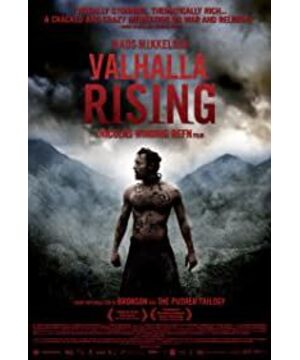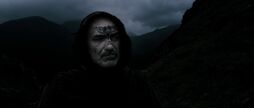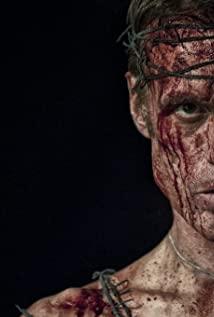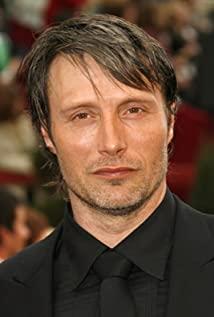The cheating of posters and film titles caused misunderstandings among ordinary audiences, classical muscle fans, and action fans, and brought out inevitable anger. But this is not Niwin’s first episode—how many people were abducted by Commander High into "Desperate Driving"? In fact, apart from the obscure plot, the watchability of the film is not low. Its lens is very stable, with strong directivity of color, composition, and light and shadow. The various meanings are completely expressed by the language of the picture-which keeps it away from the public, but it proves that the best director of Cannes to Nivin is at least in line with the technical flow standard. This Nordic man seems to want to inherit Tarkovsky’s teachings: When film is completely separated from the needs of business, market, entertainment and audiences, how far it can be, as an art of purely visual narrative. . Of course, this step of his is just a small case, but it is enough to make the audience who are used to "popular" miserable.
If you want to explain the plot of the film clearly, the best way is to take screenshots, because the most convincing interpretation is the picture itself. For example, the suggestive shots of the male protagonist's "god attributes" flashed back can only be seen at a glance. This also shows that the visual attributes of this film are very strong, and even a part of the voice has been abandoned: in addition to the individual music that enhances the atmosphere, even the male protagonist is "dumb". But this is not inconsistent with the setting of the film: First, God does not talk to people. The second is that in a primitive world where there is only "man and nature", there is obviously no rich vocabulary, and the Kanye talkative family has not yet evolved. What Niwin wanted was this "primitive" atmosphere. Myths were born in primitives, so naturally they should be given the primitive mystery and solemnity. Otherwise, it's always like the fan version of "War of the Gods". Isn't it annoying to watch it for a long time?
As a result, there is indeed only "man and nature" left in Nivin's lens. Especially in the chapters "Holy Land" and "Hell", the themes are very clear: nature itself constitutes pressure on people. For the same piece of land, for people, the transition between "sacred land" and "hell" is only an instant. Both concepts are based on human feelings. Those "Christian warriors" who combine reason and desire, whether they yearn for land, wealth, or true faith, soon collapsed in the face of boundless strange nature. The fear and confusion of the unknown world made them quickly abandon God and rational civilization, either "degenerate" into savages, or turn to worship and follow the mysterious and speechless "one-eyed". Although the answer given to them by the latter is only to understand and accept the inevitable death.
Regarding the identity of the "one-eyed", it actually has a double meaning. You can think of him as the deity of Odin, but in the context of this film, this Odin is the embodiment of primitiveness and violence. He is "the god of warriors". This is also the important significance of the "Valhalla" temple-here are soldiers (killers), who can be promoted to this temple and become gods after they have died in battle (being killed). This sets the strong violent nature of this myth. And the focus of this film is this article: Odin still fights and kills as a "fighter" when he is restrained and enslaved. He was tied up, which seemed to imply the control and use of this "force" by humans); he used the form of killing enslavers to fight for freedom; what he brought to the "holy land" also used burning, killing, looting, and looting. "Christian warriors" (this paragraph is highly consistent with the plot of the Viking mythology: the souls of the warriors traveled on ships and traveled through the clouds to the Valhalla Temple). Most of these warriors also died in violent killings in the "Holy Land"; finally, according to this rule, Austrian Ding himself must also die in the form of violence to return to the temple. Therefore, the "one-eyed" was killed by the Indian soy sauces that fell from the sky. The only survivor is a child, which also fits this setting: the child is not yet a fighter. He has not killed anyone, so even if he is killed, he cannot enter the temple. If so, he can only be a bystander in this violent world.
So far, the film has completed the restoration of the myth: this is a myth about violence. The primitive and uncaused violence belonging to God is older and more powerful than the violence derived from human greed and belief. Human violence stems from the purpose it pursues, which is a means of realization. There is no reason for God's violence, and it is more similar to an instinct and natural force ("one-eyed" does not fear nature, whether facing the fog or the wilderness). "The rise of Valhalla" essentially means the worship and praise of this violence. This, Niwin has already done it in a way of traveling back to the ancient "epic style". The trouble is that modern audiences have long lost their appetite for this style. As a result, this film is destined to become a "cult"-style myth film-or a god film. Moreover, it was this "grass-rooted" director who produced such an extremely boring film. Where did all those "academic" roots die?
View more about Valhalla Rising reviews











